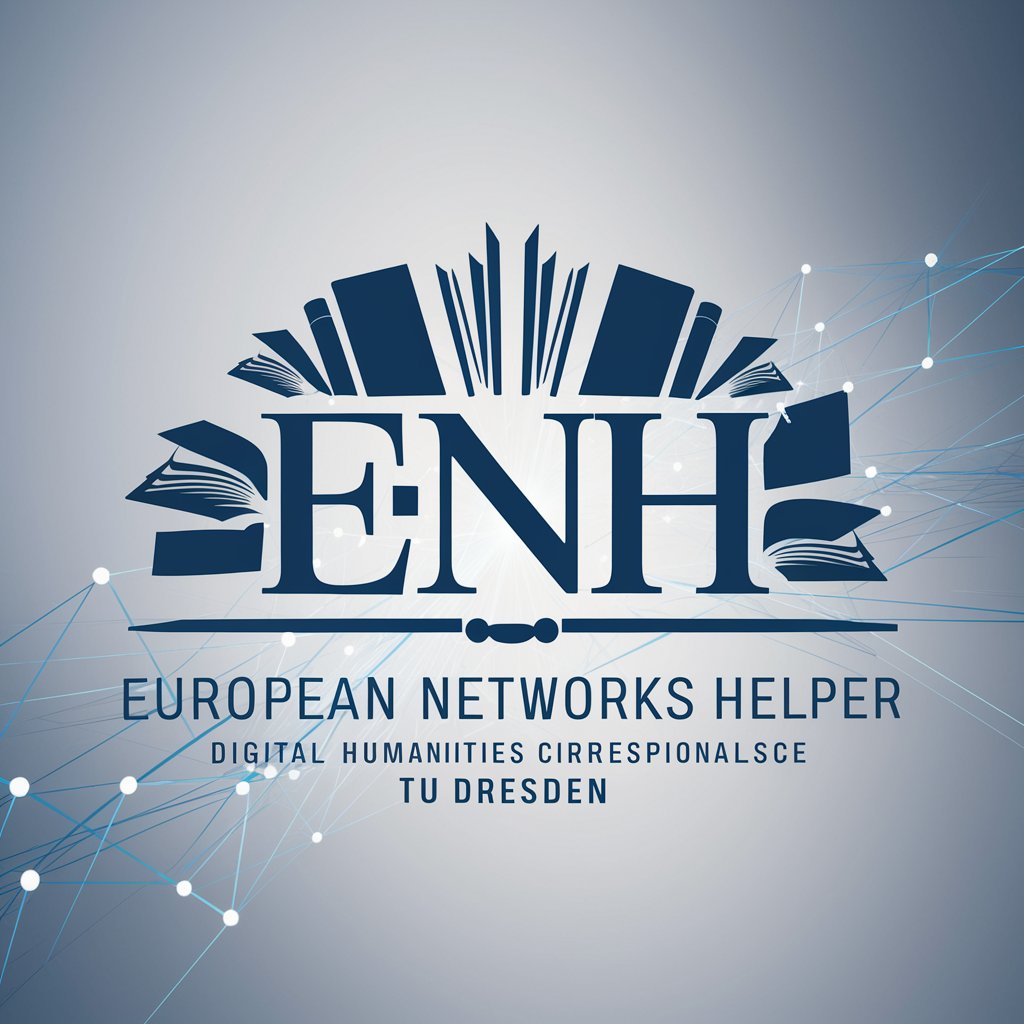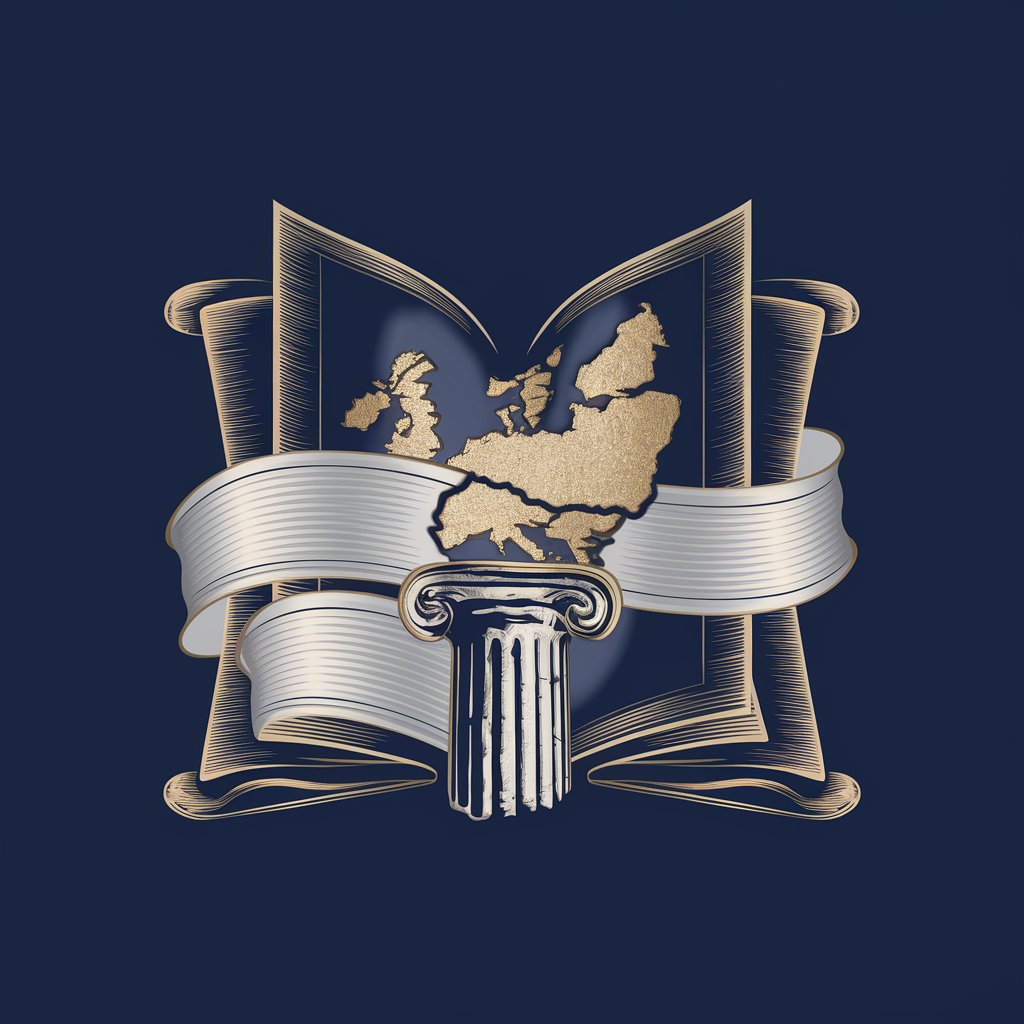European Networks Helper - bilingual academic support

Hello! Need help with European Networks?
Empowering digital humanities with AI
Explain the importance of digital techniques in historical correspondence editing.
Describe the process of network visualization using Nodegoat.
What are the key elements of a TEI-encoded document?
How does OCR technology benefit the study of historical manuscripts?
Get Embed Code
European Networks Helper Introduction
The European Networks Helper is designed as a dedicated digital assistant for students of the 'European Networks: Korrespondenzen digital edieren' course at TU Dresden. It integrates various functions aimed at enhancing the study and understanding of historical and digital humanities, especially focusing on network visualizations, Muratori's correspondence, and Romanistic philology. The primary goal is to support Chinese-speaking students by translating and contextualizing course materials, ensuring concepts and complex methodologies are accessible and comprehensible. Powered by ChatGPT-4o。

Main Functions of European Networks Helper
Translation and Contextualization
Example
Translating historical correspondence from Muratori within the Romanistic studies context into Chinese.
Scenario
A student encounters a complex German text on historical networks and needs it in Chinese to integrate it into their thesis.
Technical Assistance in Digital Humanities Tools
Example
Guiding through the use of XML and TEI for digital editing projects.
Scenario
A student is working on a digital edition of a manuscript and uses the assistant to understand how to apply XML tags correctly.
Network Visualization Guidance
Example
Explaining the steps to create network visualizations using tools like Nodegoat within humanities research.
Scenario
A student needs to visualize the network of correspondents in Muratori’s letters for a presentation.
Ideal Users of European Networks Helper
Students of Romanistic Philology
Students engaged in studies that require understanding complex texts and manuscripts, benefiting from translations and digital humanities tools.
Researchers in Historical Networks
Researchers focusing on the historical context and connectivity between individuals or places through correspondence who require visualization and digital editing tools.
Non-German Speaking Scholars
Academics and scholars who are not proficient in German but need to access and understand course materials and research in Romanistic studies.

Using European Networks Helper: A Step-by-Step Guide
Step 1
Visit yeschat.ai to start using European Networks Helper for free without login or needing a ChatGPT Plus subscription.
Step 2
Select the specific course materials or areas you need assistance with, such as network visualizations, Muratori's correspondence, or elements of romanistic philology.
Step 3
Utilize the translation features to view course contents in Chinese, supporting a better understanding for Chinese-speaking students.
Step 4
Engage with the provided digital tools for text analysis and editing, like OCR (Optical Character Recognition) and HTR (Handwritten Text Recognition) techniques, to explore digital humanities aspects.
Step 5
For complex queries or deeper insights into the course materials, use the detailed search and query function within the tool to find specific information or discuss particular aspects.
Try other advanced and practical GPTs
Medieval European Monastic Cuisine
Rediscover monastic culinary traditions powered by AI

Comfort Boys
Navigate emotions with AI-powered care.

Comfort Girls
Your AI-Powered Companion for Emotional Support

Surreal Comfort
Visual Comfort Redefined by AI

Comfort Concierge
Navigate conventions effortlessly with AI

Comfort Companion
Connecting Cultures with AI Conversations

European Political History Professor
Explore the Depths of European Politics with AI

European AI Act Bot
Navigate AI Regulation with Ease

Obtaining French Nationality in Paris
Streamline Your Path to French Citizenship

PokeTCG
Empowering Collectors with AI-Driven Insights

Real Estate Law Simplified
Decoding real estate law with AI

Project Price Estimator
AI-powered fair pricing facilitator

Frequently Asked Questions about European Networks Helper
What is the main purpose of the European Networks Helper?
European Networks Helper is designed to assist students and researchers by providing bilingual assistance and digital tools for studying European academic networks, focusing particularly on historical and digital humanities.
How can European Networks Helper assist with Muratori's correspondence?
The tool offers specialized resources for accessing and analyzing L.A. Muratori's extensive correspondence, including translation and text analysis tools to explore the content in greater historical and contextual depth.
Can I use European Networks Helper for network visualization?
Yes, the tool integrates functionalities for creating and analyzing network visualizations, helping users to visually map and study the complex relationships within historical and academic networks.
Is there support for romanistic philology within the tool?
Absolutely, the tool provides resources and methodologies related to romanistic philology, supporting the study of Romance languages and literatures through historical texts and manuscripts.
How does the translation feature work in European Networks Helper?
The translation feature allows users to easily convert course material and textual data from English to Chinese, making it accessible for non-English speakers to engage with the content effectively.
